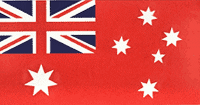 SPARROW FORCE UNITS |
|
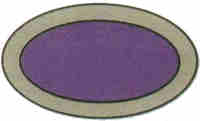 2/11th colour patch was 8th Division RAE 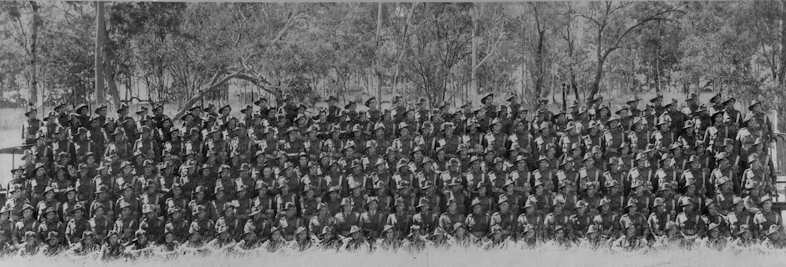 All sections, 2/11th Fd. Coy. 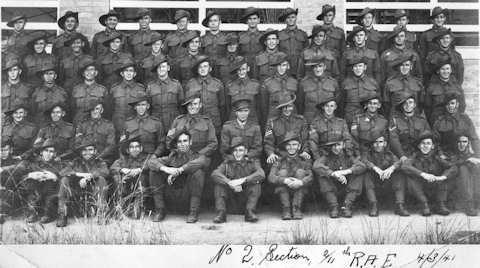 No.2 section, 2/11th Fd. Coy. 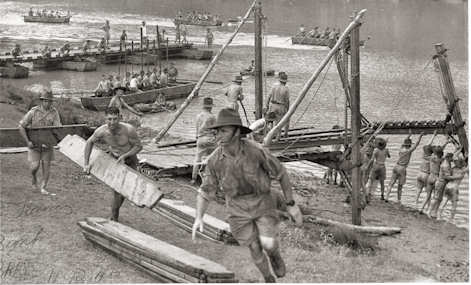 Training at Redbank, Qld. 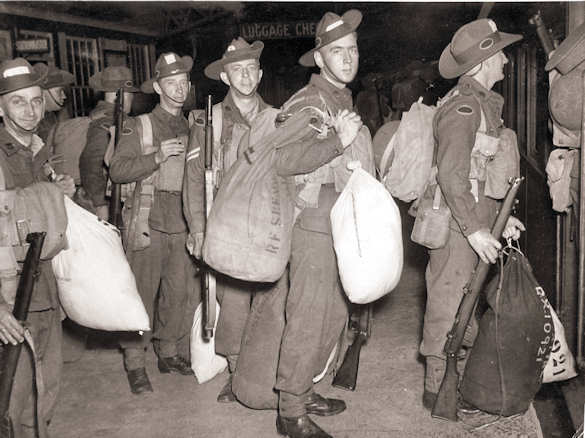 At South Brisbane station  NARL Premiers 1941 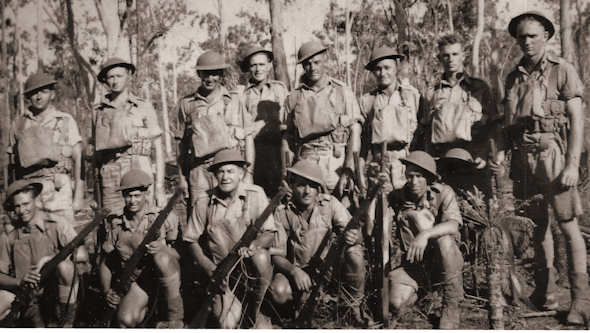 Battle-ready sub-section 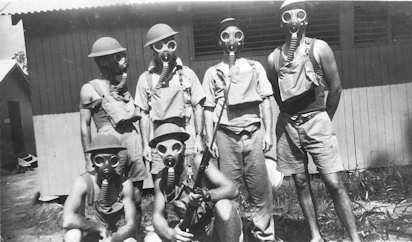 11th Field Coy. sappers  Bridge building |
2/11th FIELD COMPANY, ROYAL
AUSTRALIAN ENGINEERS... Raised in country Queensland, this WW2 unit used the '2/' prefix designation to differentiate from its Great War predecessor, the 11th Field Company. The 11th Fd. Coy. in the Great War distinguished itself on the western front. Field engineers, for which the private rank was 'sapper', were essential in the trench warfare of western Europe at the time. They constructed defences, roads and bridges, tunnels, trenches, communication lines, buildings of all types and observation posts. For the soldier's well-being, they organised piped water, baths, showers and cookhouses, so their engineering expertise played an important role on the battlefield in many ways. Engineers then, and still today, are regarded as semi-combatants, so their small arms skills and training makes them multi-purpose 'diggers'.
After arriving on Timor, it was little different to 7MD Northern Territory as they built roads and bridges, ran water pipelines, communications, constructed washrooms and latrines, huts and buildings. Field engineers perhaps had a broader responsibility than the Fortress engineers who were essentially serving the Heavy Battery and emplacement. Based at Penfui at the airstrip, the 2/11th nonetheless assisted with the re-mounting of the 6-inch Mk XI guns farther up the hillside at Klapalima. Another important role for the sappers was demolition; they destroyed bridges and airfields and removed enemy roadblocks, handling explosive charges.
At Winnellie, the 2/11th prepared defences for the RAAF airfields and munitions stores. Parties were also engaged in bridge building with the push to improve roads and communications up to Darwin. During field exercises in mid-November, sections of the 2/11th acted as 'enemy' for the 2/40th and were umpired as victors over the infantry companies. The 2/11th had a football team that also won the NARL Premiership in 1941, in Darwin.
No.2 Section of 2/11th left Darwin on the H.M.A.S. Westralia on 10th December 1941 and arrived at the Usapa Besar beach near Kupang two days later. After wading ashore, they set up at the Penfui airstrip and proceeded to install water supply, ablution blocks and erect buildings. A track was cut from Baoemata to Usau and dispersal airfields were established. With so many tasks and sub-sections under strength, another officer, Lieut. Ley and about 18 other sappers were flown in to Penfui by Hudson on 6th February.
On
D sub-section of No.2 section, 2/11th Fd. Coy. was at Champlong
upgrading bridges or
destroying landing strips in the north during the fateful days of
20th - 23rd February so they did not go into captivity. The men left
the Champlong headquarters and hospital and with Lieut. Doig of the
2nd Ind. Coy., blew up
the Mina River bridge and then the Benain bridge so as to prevent the Japanese from pursuing those
who headed east to join up with the 2nd. Ind. Coy. commandos. This
group was
credited with slowing down the Japanese advance for months as they
destroyed bridges and roads.
|
|
Copyright © 2012-2013 Please report any site problems/questions such as broken links here. |
|